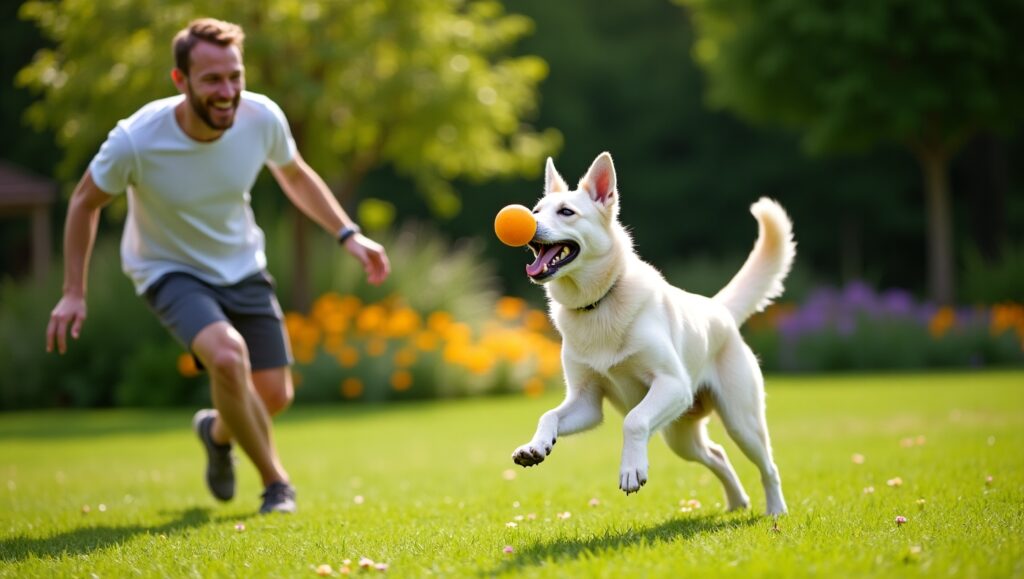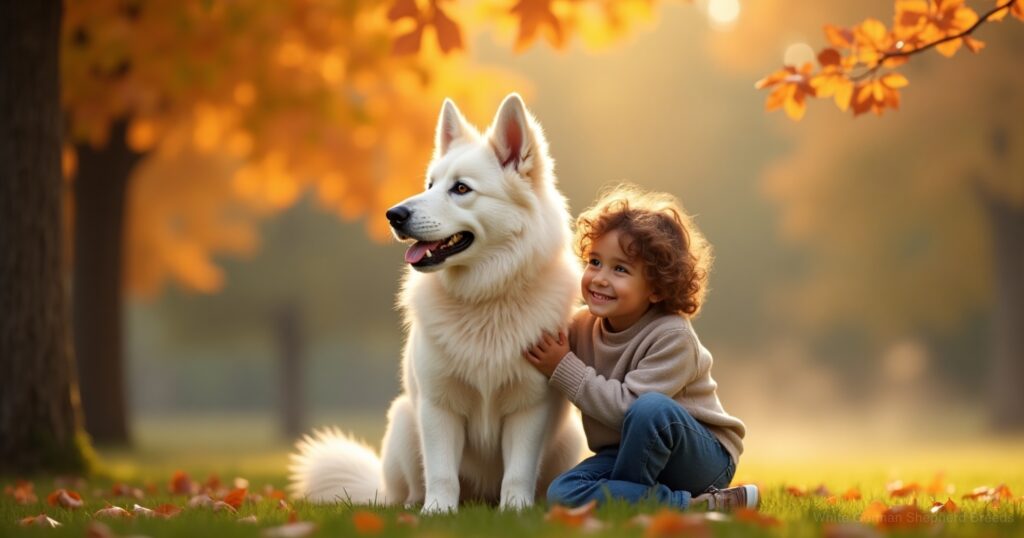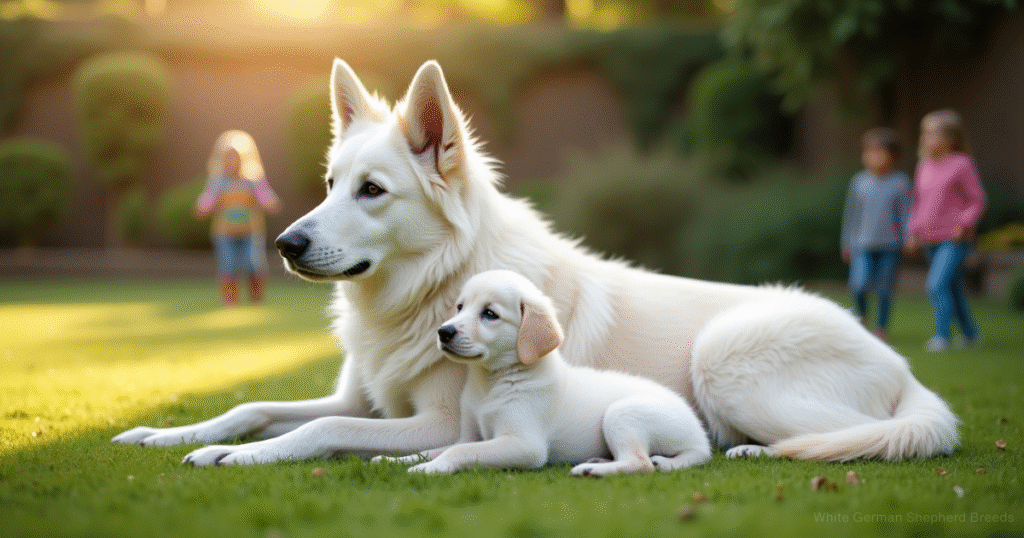
Bringing home a White German Shepherd puppy is the beginning of an incredible journey. These dogs are known for their intelligence, loyalty, and striking appearance. But raising one properly means starting with the right training from day one. Understanding puppy behavior problems and solutions will help you avoid frustration and build a strong bond. Unlike other breeds, this pup needs early, structured learning tailored to its needs. With the right approach, you’ll help shape a confident and obedient companion. In this guide, we’ll walk you through white German Shepherd puppy training, covering key steps like early training for German Shepherds, socialization, discipline techniques, and more to ensure lasting success.
Understanding the White German Shepherd’s Nature
Every dog breed has a unique personality. The White German Shepherd is known for its calm, loyal, and alert nature. But these puppies also need structure. If they don’t have clear rules early on, they can become difficult to manage. That’s why understanding German Shepherd temperament and training is the first step in raising a balanced dog.
These dogs are not only smart, but also very sensitive. They respond best to gentle guidance and consistency. If you yell or use punishment, they might get scared or shut down. But if you use love and clear direction, they’ll give you their full trust. That’s why training your White GSD with care is so important.
When and How to Begin Puppy Training
The best age to train German Shepherd puppy is as early as 8 weeks. This is when their brains are developing fast, and they begin to understand basic rules. This is called early training for German Shepherds, and it helps set the tone for lifelong obedience.
You don’t need to start with complex lessons. Simple, short sessions are best. Teach them where to sleep, how to wait for food, and how to respond to their name. Use a happy tone, repeat often, and reward good behavior. This will help your puppy feel safe while learning. In time, they’ll start looking to you for direction.
Essential Commands Every White GSD Puppy Should Learn
Teaching basic commands for German Shepherd puppies is the heart of training. Start with four commands: Sit, Stay, Come, and Leave It. These are not just tricks. They help keep your puppy safe and make daily life easier.

Start with “Sit” by holding a treat over their head and moving it slowly back. When their bottom touches the floor, say “Sit” and give the treat. Keep sessions short—just 5 to 10 minutes. With practice, they’ll understand. Each command should have a clear word and a hand signal. Repeat often so they can learn fast. These commands are part of proper white shepherd obedience tips.
| Command | Purpose | When to Use |
| Sit | Calm the dog | Before meals, crossing roads |
| Stay | Keep the dog in one place | During visits, before walks |
| Come | Call the dog back | At parks, in emergencies |
| Leave It | Stop the dog from grabbing something | With trash, food, or danger |
Positive Reinforcement: The Key to Effective Training
Dogs love to please, especially White Shepherds. So the best way to train them is by using positive reinforcement for dogs. This means giving treats, praise, or affection when they do something right. It encourages them to repeat good behavior.
Avoid yelling or punishing. That can cause fear or confusion. Instead, reward good actions immediately. Use small, healthy treats or excited words like “Good job!” This method is part of the most successful training tools for German Shepherds and helps build trust. Be patient and repeat often. That’s how habits stick.
Socialization Strategies for a Well-Rounded Puppy
Socializing a German Shepherd puppy means exposing them to new people, animals, places, and sounds. This helps reduce fear later. Start at home by inviting calm visitors. Then move to short walks in quiet areas. Slowly increase their exposure to busier places.

If your pup meets many types of people and pets early, they will grow into a confident dog. Try playing calming music, introducing other pets slowly, and visiting new parks. The more positive exposure they get, the better their behavior will be. This is a big part of raising a happy White GSD.
Avoiding Common Training Mistakes with White GSDs
Many new owners make mistakes without knowing. One of the biggest German Shepherd training mistakes to avoid is being inconsistent. If you let your puppy jump on the couch one day and scold them the next, they’ll be confused.
Another mistake is starting training too late. Waiting too long can lead to puppy behavior problems and solutions can become harder. Also, avoid too many commands at once. Keep things simple and repeat one lesson until they master it. Stick to short training sessions to prevent boredom or stress. Make learning fun.
FAQ: How to Start Training a White GSD Puppy?
Many people ask when to start, and the answer is simple: now. The earlier you begin, the easier it is to build good habits. If your puppy doesn’t listen, don’t worry. Stay calm and use consistent rewards. Sometimes it helps to use crate training white German Shepherd puppies to create structure.
Crate training is not a punishment. It gives your dog a safe space to relax. Use it during bedtime or when you’re out. It also helps with housebreaking a white shepherd pup because dogs don’t like to go potty where they sleep. Keep the crate cozy and never use it as a timeout.
“Training your puppy is not about control. It’s about communication.”

Training a White GSD puppy is a journey full of rewards. By starting early, using positive reinforcement, and understanding your puppy’s needs, you’re building a strong foundation. Always stay patient and enjoy the process. In the end, your well-behaved White Shepherd will thank you with love, loyalty, and endless tail wags.
Q1: What is the first thing to teach a German Shepherd puppy?
A: Start with basic obedience commands like “sit,” “stay,” and “come.” Also, focus on name recognition and positive reinforcement to build trust.
Q2: What age should I start training a German Shepherd puppy?
A: You can begin basic training as early as 7 to 8 weeks old. Early socialization and gentle commands are key to shaping good behavior.
Q3: How do I train my German Shepherd puppy at home?
A: Use short, consistent sessions with treats and praise. Focus on commands, leash manners, and crate training. Keep the environment calm and free of distractions.
Q4: How do I discipline my German Shepherd puppy?
A: Avoid harsh punishment. Instead, use firm voice corrections, redirection, and time-outs. Reward good behavior to encourage learning.
Q5: How to train a 2-month-old German Shepherd?
A: Start with socialization, basic commands like “sit” and “come,” and crate training. Use gentle, positive methods and keep training fun and short.
